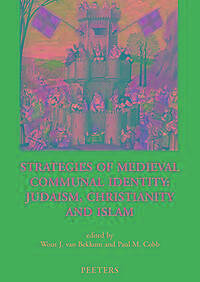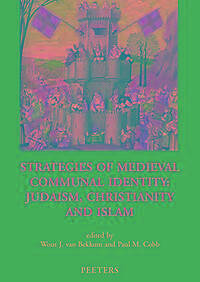
- Afhalen na 1 uur in een winkel met voorraad
- Gratis thuislevering in België vanaf € 30
- Ruim aanbod met 7 miljoen producten
- Afhalen na 1 uur in een winkel met voorraad
- Gratis thuislevering in België vanaf € 30
- Ruim aanbod met 7 miljoen producten
Zoeken
Strategies of Medieval Communal Identity: Judaism, Christianity and Is
Judism, Christianity and Islam
Cobb P.M., van Bekkum W.J.
€ 50,00
+ 100 punten
Omschrijving
The leading theme of this collection of essays and studies is the diversity of aspects of medieval communal identity. While the authors were selected for the very diversity of their interests, their final papers do tend to cohere around some recurrent themes. All of the studies in this volume touch upon one or more of the complex issues that lie at the heart of religious identity in the Middle Ages. They do so through concrete study of the very real practices by which medieval Jews, Christians and Muslims could police the perimeters of their spiritual communities. The authors were especially urged to note instances where religious identity was shaped without reference to dogmas, creeds, or sacred law. In no case are any of these papers satisfied with normative, legal definitions of Jew, Christian, or Muslim in medieval times. Sometimes small and subtle, sometimes explicit, dire, and violent, the techniques that emerge from these studies testify to the diversity of strategies of medieval communal identity over space and their changes over time.
Specificaties
Betrokkenen
- Auteur(s):
- Uitgeverij:
Inhoud
- Aantal bladzijden:
- 190
- Taal:
- Nederlands
- Reeks:
- Reeksnummer:
- nr. 5
Eigenschappen
- Productcode (EAN):
- 9789042914926
- Verschijningsdatum:
- 24/01/2005
- Uitvoering:
- Hardcover
- Formaat:
- Trade paperback (VS)
- Afmetingen:
- 173 mm x 241 mm
- Gewicht:
- 503 g

Alleen bij Standaard Boekhandel
+ 100 punten op je klantenkaart van Standaard Boekhandel
Beoordelingen
We publiceren alleen reviews die voldoen aan de voorwaarden voor reviews. Bekijk onze voorwaarden voor reviews.











